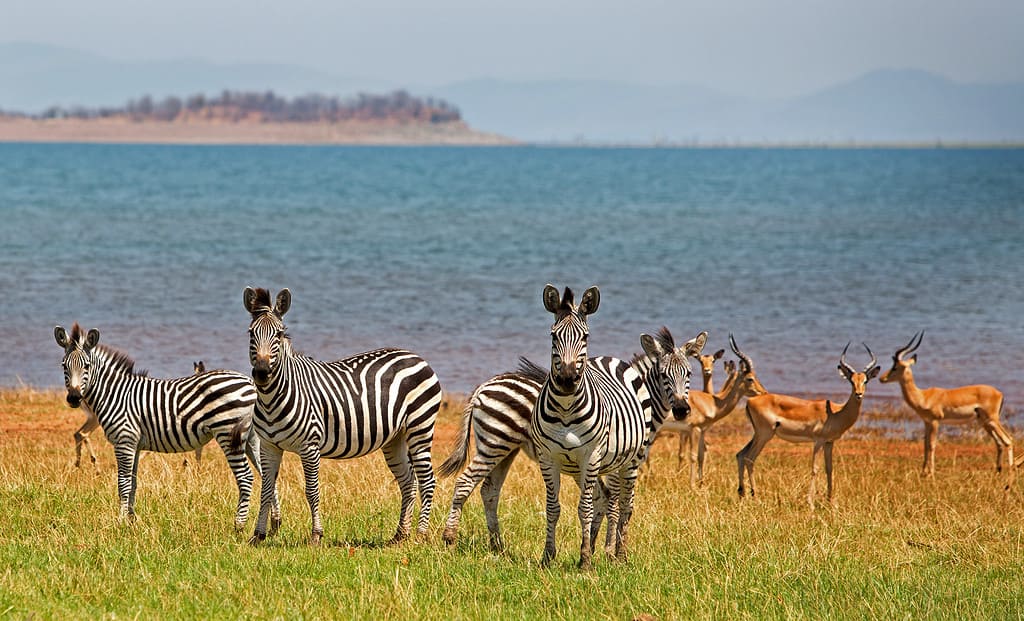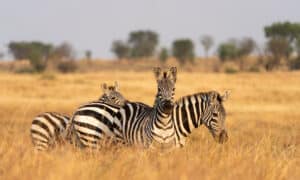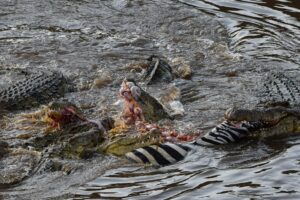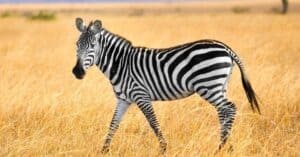A Twitter account called The Dark Side of Nature has a plethora of footage that will leave you on the edge of your seat. The video we’re going to be looking at today shows just how incredible a mother’s love can be after a lion attack.
Watch the Incredible Video Below
Some people might find it difficult to view the clip below. It depicts a mother zebra attempting to save her foal who is being attacked by a female lion. The video was shot by Mmbangiseni Milton Tshiolol in South Africa’s Kruger National Park.
It looks like it has a happy ending in that the mother zebra’s ferocious attack and blow to the lion’s head convinces the bewildered predator to perhaps temporarily stop its mission.
How Do Lions Hunt?
If you look closely at the video, you can see the lioness take the zebra down by its neck. Is this normally how they hunt? Lions typically hunt at nightfall and relax and sleep for the majority of the day. They have sharp eyesight and impeccable night vision.

Male lions don’t always participate in the hunt.
©keith hudson/Shutterstock.com
The lionesses typically carry out the hunts. Zebra and wildebeest are slower and simpler animals to catch for lions. A lion attack can happen to gazelles and smaller antelopes as well. The true hunt is a planned activity, with a few lionesses waiting nearby the herd they are after.
One of the lionesses maneuvers ahead of the herd until she is upwind of it. At this point, she abruptly emerges from hiding. She then leads the terrified herd of prey directly in the direction of the lionesses.
The lion will pick one animal from the herd and kill it by dragging the animal down by biting its neck.
How Can Young Zebras Defend Themselves From Lion Attacks?
Zebras are tough and aggressive animals built to resist sweltering heat and brutal drought. In this hostile environment, zebra parents and other herd individuals protect the foal from predators as well as from one another.
Zebras face difficulties in growing to adulthood, and each member of the herd is accountable for a foal’s protection. Predators like lions, leopards, wild dogs, and hyenas prey on zebras. The zebra’s stripes serve as cover when juxtaposed with the tall grasses of the savanna.

Zebras migrate in herds, allowing their stripes to mingle with others, thereby confusing predators.
©iStock.com/paulafrench
When zebras migrate in big herds, their stripes mingle with the rest of the herd, further confusing their predator. Zebras sleep in shifts when congregating in large numbers on the grassland to maintain a close eye on what’s going on around them.
They can look above the tall vegetation while grazing because their eyes sit on the sides of their heads. The zebra may initially prefer to run away from danger while the foal follows, but this might not always be viable.
Zebras have been known to defend their young when confronted by predators by kicking them hard enough to knock them out.
The photo featured at the top of this post is © catahoulagirl/Shutterstock.com
Thank you for reading! Have some feedback for us? Contact the AZ Animals editorial team.






